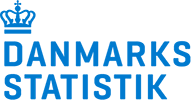Migration has long been a topic of debate across Europe, with its influence reaching into the political, economic, and social fabrics of societies. The 2020 New Pact on Migration and Asylum by the European Commission acknowledges the complexity of this issue, calling for shared responsibility and solidarity among EU member states. Simultaneously, regional development remains one of the EU’s main pillars for fostering sustainable growth, job creation, competitiveness, and social well-being across its diverse territories. This new report "Regional Development Indicators" by Dr. Korrie Melis and Dr. Elles Bulder, investigates how these two critical themes—migration and regional development—interact with one another.
The core premise of the report is to examine the ways in which migration contributes to regional development by creating a set of measurable regional indicators. These indicators are essential for policymakers, as they provide insight into how regions are affected by migration and how this impact can be managed to promote sustainable growth and social cohesion. The authors argue that migration, particularly international migration, is an integral part of global change and development. The report moves beyond the traditional economic perspective, seeking to understand migration’s multidimensional impacts—whether they contribute to or hinder regional development.

Key Dynamics Explored in the Report
- Migration as a Driver of Regional Change: Migration is framed as a key driver of regional change, contributing not only to demographic shifts but also influencing economic, cultural, and social transformations. The report identifies that migration cannot be understood as a mere movement of people from one location to another. It involves complex motivations, capabilities, and agency, where migrants choose their destinations based on various factors like job opportunities, quality of life, and social networks.
- Typology of Regions: Winners and Losers: One of the report's significant insights is the typology of regions into ‘winning’ and ‘losing’ categories. Winning regions—often urban, economically dynamic, and well-connected—tend to attract more migrants, benefiting from their skills and contributions. Conversely, losing regions, which are often rural, remote, or economically stagnant, experience out-migration and a loss of talent. This dynamic leads to the exacerbation of regional inequalities and further challenges for development.
- Economic, Social, and Cultural Impacts of Migration: The report explores how migration shapes regional economies, often revitalizing local markets through the introduction of new labor forces, businesses, and cultural practices. Migrants often fill crucial gaps in both low-skilled and high-skilled sectors. Additionally, migration can lead to social and cultural hybridization, where the integration of new ideas, traditions, and values influences the host communities. Melis and Bulder emphasize that these impacts are not uniform and vary depending on the region’s ability to integrate and harness the potential of migrants.
- Demographic Changes and Regional Development: The demographic dimension of migration is crucial, especially in light of aging populations in many European regions. Migrants, particularly younger generations, can help mitigate the negative effects of an aging workforce, contributing to population growth and increasing the labor pool. However, the report also highlights that demographic benefits are not evenly distributed, with metropolitan areas reaping more advantages than rural or remote regions.
- The Role of Mobility in Regional Networks: The report sheds light on the role of mobility in forming regional networks. Migrants often maintain ties with their countries of origin, creating transnational networks that foster economic and social linkages across borders. This flow of people, goods, and ideas can enhance regional development, especially when regions are able to tap into these networks for trade, investment, or innovation.
- Challenges in Data Collection and Analysis: One of the dynamics explored is the difficulty in collecting consistent data across European regions. Migration is an inherently complex process to measure, with both qualitative and quantitative data needed to capture its full impact. The report highlights the challenges in obtaining data at NUTS 2 and NUTS 3 levels, which are essential for creating accurate and comparable regional indicators.
- Policy Implications: Towards a Balanced Approach: The report discusses the political implications of migration in regional development. It emphasizes the need for balanced policies that recognize both the opportunities and challenges posed by migration. Policymakers must navigate between competing narratives—ranging from the view of migration as a threat to national identity and security, to a more optimistic perspective that sees migration as a key to revitalizing struggling regions. The Regional Policy Dashboard (RPD) proposed in the report is designed to assist policymakers in this endeavor by providing them with data-driven insights that can inform more nuanced and effective policies.

Methodology
The research took a twofold approach: Initially, the authors built a conceptual framework based on literature and existing models of regional development. Five domains were selected: demographic, economic, social, living environment, and political. The next step involved analyzing available data from sources like Eurostat and OECD. This process allowed for the adjustment of the theoretical framework to ensure the indicators were practical and measurable.
Conclusion: A Call for a Holistic Approach
The report concludes that migration must be seen as an intrinsic part of broader regional development processes. It is not an isolated phenomenon but a dynamic force that interacts with economic, social, and political factors to shape regional futures. The PREMIUM-EU project calls for a holistic approach to migration and regional development, one that moves beyond traditional economic metrics and considers the broader impacts on quality of life, social cohesion, and cultural transformation.
By developing a comprehensive set of indicators and tools like the RPD, the report provides a roadmap for policymakers to navigate the complexities of migration and leverage its potential to promote sustainable regional growth. However, further research and data collection are needed to fully understand the long-term effects of migration and to ensure that all regions, not just the prosperous ones, can benefit from this global phenomenon.











